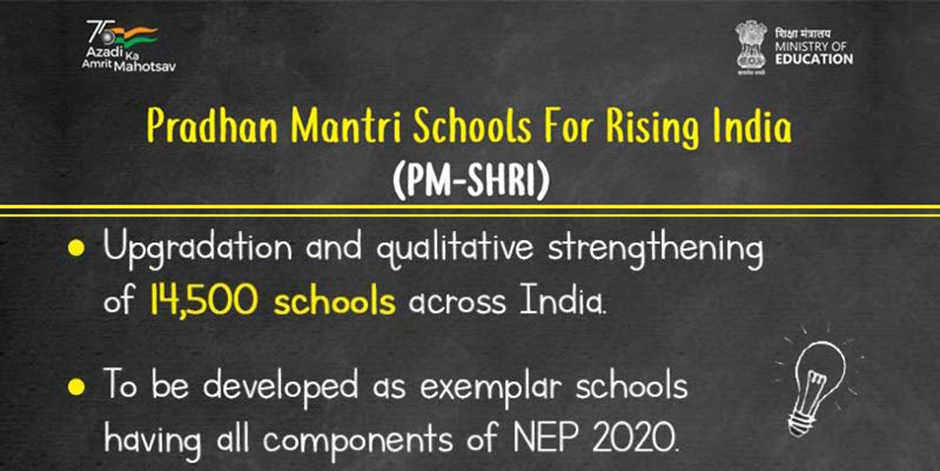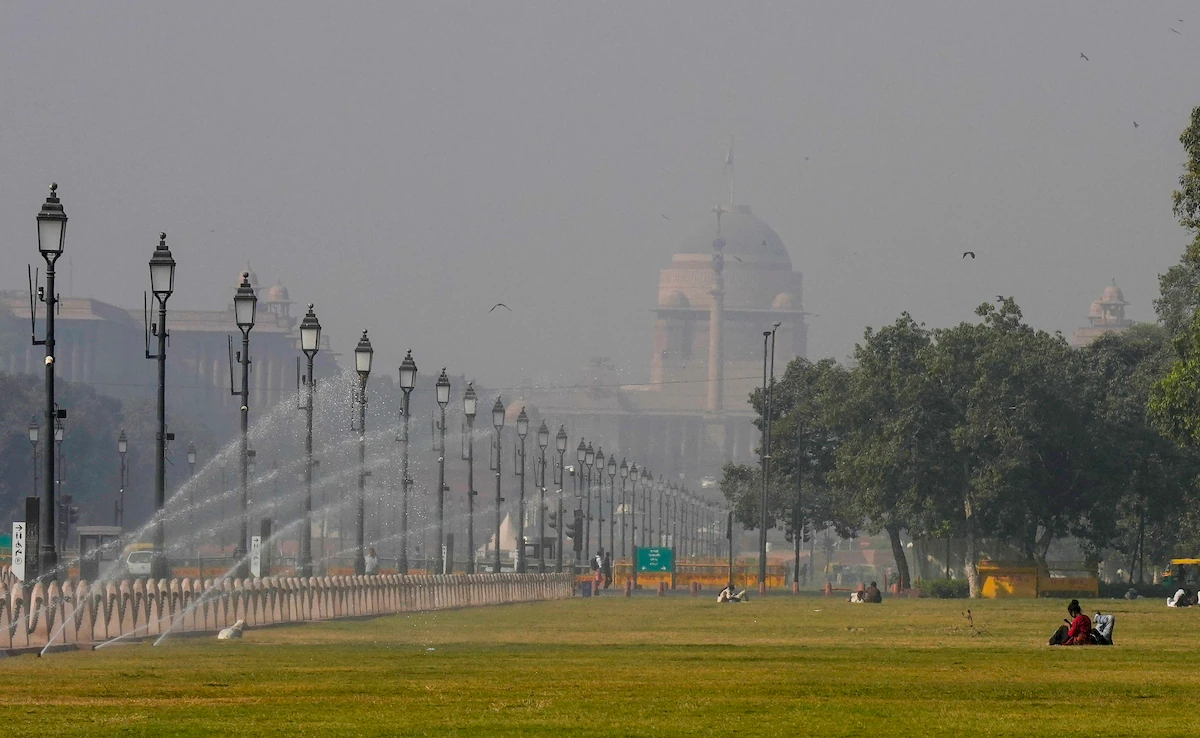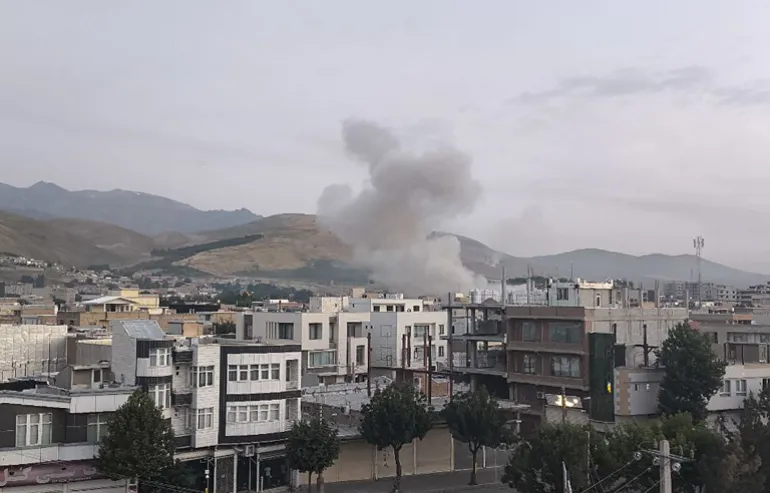- Courses
- GS Full Course 1 Year
- GS Full Course 2 Year
- GS Full Course 3 Year
- GS Full Course Till Selection
- Answer Alpha: Mains 2025 Mentorship
- MEP (Mains Enrichment Programme) Data, Facts
- Essay Target – 150+ Marks
- Online Program
- GS Recorded Course
- Polity
- Geography
- Economy
- Ancient, Medieval and Art & Culture AMAC
- Modern India, Post Independence & World History
- Environment
- Governance
- Science & Technology
- International Relations and Internal Security
- Disaster Management
- Ethics
- Current Affairs
- Indian Society and Social Issue
- NCERT- Science and Technology
- NCERT - Geography
- NCERT - Ancient History
- NCERT- World History
- CSAT
- 5 LAYERED ARJUNA Mentorship
- Public Administration Optional
- ABOUT US
- OUR TOPPERS
- TEST SERIES
- FREE STUDY MATERIAL
- VIDEOS
- CONTACT US
PM Schools for Rising India (PM-SHRI) Scheme
PM Schools for Rising India (PM-SHRI) Scheme
After Punjab, the Delhi government has decided to sign a Memorandum of Understanding (MoU) with the central government to implement the Pradhan Mantri Schools for Rising India (PM-SHRI) scheme.
- Previously, the Education Ministry had withheld funds under the Samagra Shiksha Abhiyan (SSA) from Delhi, Punjab, and West Bengal due to their reluctance to participate in the PM-SHRI scheme.
- 5 states — Tamil Nadu, Kerala, Delhi, Punjab and West Bengal — are yet to sign the MoU.
- While Tamil Nadu and Kerala have indicated their willingness, Delhi, Punjab and West Bengal had earlier refused, forcing the Center to stop their SSA funds.
Samagra Shiksha Abhiyan (SSA):
|
What is the PM-SHRI Scheme?
- About:
- Launched in 2022, the PM-SHRI Scheme is a centrally sponsored initiative aimed at establishing over 14,500 PM-SHRI Schools. It enhances existing schools to demonstrate the implementation of the National Education Policy (NEP) 2020.
- Objective:
- Create an inclusive and nurturing environment that promotes student well-being and safety, offering diverse learning experiences and access to quality infrastructure and resources.
- Funding:
- 60:40 between Centre and State Governments and UTs with legislature (except J&K).
- 90:10 for North-Eastern and Himalayan States, and UT of J&K.
- 100% central funding for Union Territories without legislature.
- States must confirm participation by signing an MoU with the Education Ministry.
- Duration:
- From 2022-23 to 2026-27. Post this period, states/UTs will be responsible for maintaining the benchmarks achieved by these schools.
Key Features of PM-SHRI Schools:
- Holistic Development: Focus on skills such as communication, collaboration, and critical thinking.
- Teaching Methods: Experiential, inquiry-driven, and learner-centered approaches.
- Infrastructure: Modern labs, libraries, art rooms, and green initiatives like water conservation and waste recycling.
- Facilities: Smart Classrooms, Computer Labs, Integrated Science Labs, Vocational/Skill Labs, and Atal Tinkering Labs.
- Assessment: Competency-based assessments focusing on applying knowledge to real-life situations.
Schools Eligible for PM-SHRI Status:
- Schools managed by Central/State/UT Governments and local bodies.
- All Kendriya Vidyalayas and Navodaya Vidyalayas that are non-project and operate from permanent buildings.
Monitoring Framework:
- School Quality Assessment Framework (SQAF): Monitors performance through regular evaluations to ensure high standards. SQAF sets standards and best practices for institutional excellence.
Selection Process:
- Stage 1: Signing MoU with the Centre.
- Stage 2: Identifying eligible schools based on UDISE (Unified District Information System for Education)+ data.
- Stage 3: A challenge method where eligible schools compete to meet specific criteria. States/UTs/KVS/JNV verify claims, and an Expert Committee headed by the Secretary makes the final selection.
National Education Policy (NEP) 2020:
|
Conclusion:
The PM-SHRI Scheme represents a significant push towards improving school education in India by showcasing the implementation of the National Education Policy (NEP) 2020. By focusing on holistic student development, modern infrastructure, and competency-based assessments, the scheme aims to set benchmarks for quality education across the country. The integration of diverse learning methods and advanced facilities under PM-SHRI highlights a commitment to nurturing well-rounded students. The successful implementation and monitoring of this scheme will be crucial in ensuring that the schools not only meet but exceed educational standards, thus contributing to India's broader educational and developmental goals.
Must Check: Best IAS Coaching In Delhi
UPSC Prelims Result 2024 Out: Expected Cut Off & Other Details, UPSC Prelims 2024 Answer with Explanation, Daily Prelims Quiz, Daily Current Affairs, MONTHLY CURRENT AFFAIRS TOTAL (CAT) MAGAZINE, Best IAS Coaching Institute in Karol Bagh, Best IAS Coaching Institute in Delhi, Daily Mains Question Answer Practice, ENSURE IAS UPSC Toppers, UPSC Toppers Marksheet, Previous Year Interview Questions, UPSC Syllabus





